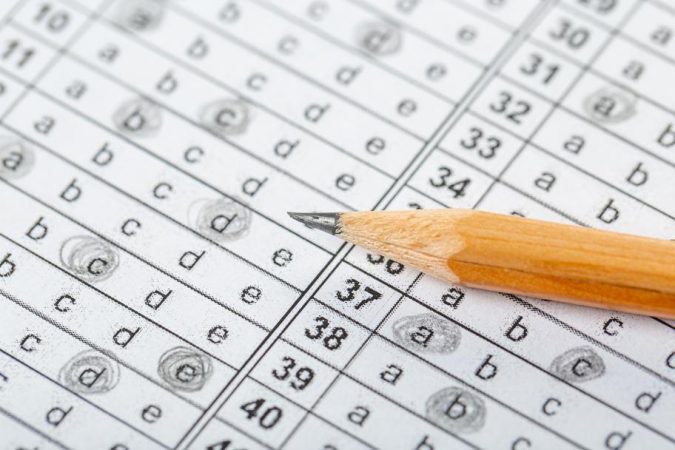Parents depend on schools to prepare their children with the skills needed in the global economy. In Virginia public schools, K-12 instruction is governed the Standards of Learning (SOLs). Between 1995 and 2015, our math SOLs were based on “best practices” identified by scientists who study how the brain learns mathematics. Listening to cognitive experts worked. In national testing, Virginia’s math test scores rose to rank in the top 10% of the nation.
But in 2016, at key points, Virginia’s science-based SOLs were replaced with Common Core math standards. According to cognitive scientists, the Common Core asks students to learn math in ways that have proven to be ineffective.
During 2023, math SOLs will again be revised by the Virginia Board of Education. Citizens will be invited to submit public comments. Should we once again align our SOLs with the Common Core?
Facts On K-12 Standards
Virginia adopts standards for subjects including English, Mathematics, Science, and History. By law, SOLs in each subject are reviewed and re-adopted every seven years. Since 2002 in all states. K-12 reading and math instruction in states has been governed by state-approved standards, and students are tested on those standards.
I was a Virginia K-12 educator both before and after the adoption of the SOLs. Standards are only one part of instruction, but I found they played an important role. Virginia’s SOLs and their accompanying “Curriculum Frameworks” specify what to teach, and often how to teach, each subject. Local school divisions may use a state-supplied framework or their own but the result is the same: Good standards provide guidance helpful for beginning teachers. Poorly written standards require teachers to use ineffective strategies in classrooms.
For 20 years prior to 2016, Virginia was one of the few states with math standards that followed recommendations of cognitive science. By the end of those two decades, on the National Assessment of Educational Progress (NAEP), Virginia’s 8th graders ranked 5th in math among the 50 states. Most states had adopted “Common Core” or similar standards that were not science-based, and nearly all that did scored lower on the NAEP than Virginia.
Yet in 2016, Virginia changed its math SOLs to be nearly identical at key points to the Common Core standards. How did this happen?
A History of Standards
To learn mathematics, historically students had no choice but to memorize facts and procedures. But in the 1980’s, as calculators became inexpensive, theorists in math education proposed that memorizing facts (such as times tables) was no longer necessary.
The National Council of Teachers of Mathematics (NCTM), an organization including education professors, in 1989 proposed “standards” calling for “decreased attention” to “memorizing rules and algorithms” and “rote practice.” By 2003, over 40 states adopted standards modeled on the NCTM’s.
Virginia chose a different direction. In the early 1990’s, cognitive scientists made an unexpected discovery: that the human brain is very good at reasoning with information that is quickly recallable from memory, but the brain is exceptionally limited when applying knowledge that has not been well-memorized. 1
University of Virginia cognitive scientist Daniel Willingham explains that math is about more than fact memorization. but as a foundation, because of the brain’s structure, for all the basic arithmetic facts (such as 8 + 7 and 42/6), answers must be “not calculated but simply retrieved from memory.”
Another scientific finding was: To achieve quick recall in the limited time available for math in classrooms, flashcards and similar “retrieval practice” are essential.
And for 20 years, Virginia officials listened to science — until the SOL revision of 2016.
The 2016 Changes
From 1995 to 2015, the Virginia SOLs called for students to “recall” from memory all the basic math facts. But in 2010, the new Common Core standards set the goal as “demonstrating fluency with addition and subtraction.”
In 2016, Virginia’s SOLs were changed to say students should “demonstrate fluency for addition and subtraction.”
Similar to the Common Core?
Both 2016 Virginia and 2010 Common Core defined “demonstrating fluency” as calculating math facts. Science finds basic facts should be “not calculated but simply retrieved.” 1 The 2016 changes made our SOLs the opposite of what science recommends.
The 1995 to 2009 SOLs called for using “flashcards” to learn facts. The 2016 SOL revision dropped flashcards, calling instead for complex calculations science says the developing brain of children in Grades 1-4 simply cannot manage.
In line with the Common Core, instead of teaching students the “standard algorithms” of arithmetic, the 2016 SOL Framework requires 2nd graders to “invent” their multi-digit addition and subtraction procedures.
Guess how well that works.
In the 2023 SOL revisions, the 2016 changes can be revisited, and it comes at a good time. In 2022, the General Assembly unanimously passed the Virginia Literacy Act calling for reading instruction to be science-based.
Jillian Balow, Virginia’s Superintendent for Public Instruction, has taken steps to open the standards-setting process to more citizen input. In March of 2023, a draft of the 2023 math revisions is scheduled to be released for public comment.
My hope would be that citizens evaluate those standards by asking these questions. Will the 2023 SOLs call for:
- Quick recall, not calculation, of all basic math facts?
- Using flashcards and practice to help in learning?
- Teaching students all the standard algorithms?
- Teacher explanation, rather than student “invention,” of math?
- Help for teachers in implementing the science of learning?
Ifeach answer is YES, a foundation will be in place for SOLs that work.
As parents, when we take our children to doctors, we don’t ask: Are they Baptist or Buddhist? Red or blue? We seek treatment based on science.
From officials who decide education standards, children also deserve science-based best practices. Shall we ask state leaders to restore Virginia’s science-based SOLs?
Both the Board of Education (BOE@doe.virginia.gov) and the State Superintendent (superintendent@doe.virginiagov) are anxious to hear your views. If we are to ensure Virginia’s students learn using the best science-based practices, the time to contact them is now.

Eric (Rick) Nelson served 28 years with the Fairfax County Public Schools teaching math-intensive chemistry and physics. For over 10 years, he was an elected President of the Fairfax Co. Federation of Teachers/AFT/AFL-CIO. Currently Rick works with college educators to publicize cognitive research on how students learn in math, sciences, and engineering. He may be reached at EANelson@chemreview.net. For references on the science of learning cited in this commentary, visit https://bit.ly/3V7xCMc .






